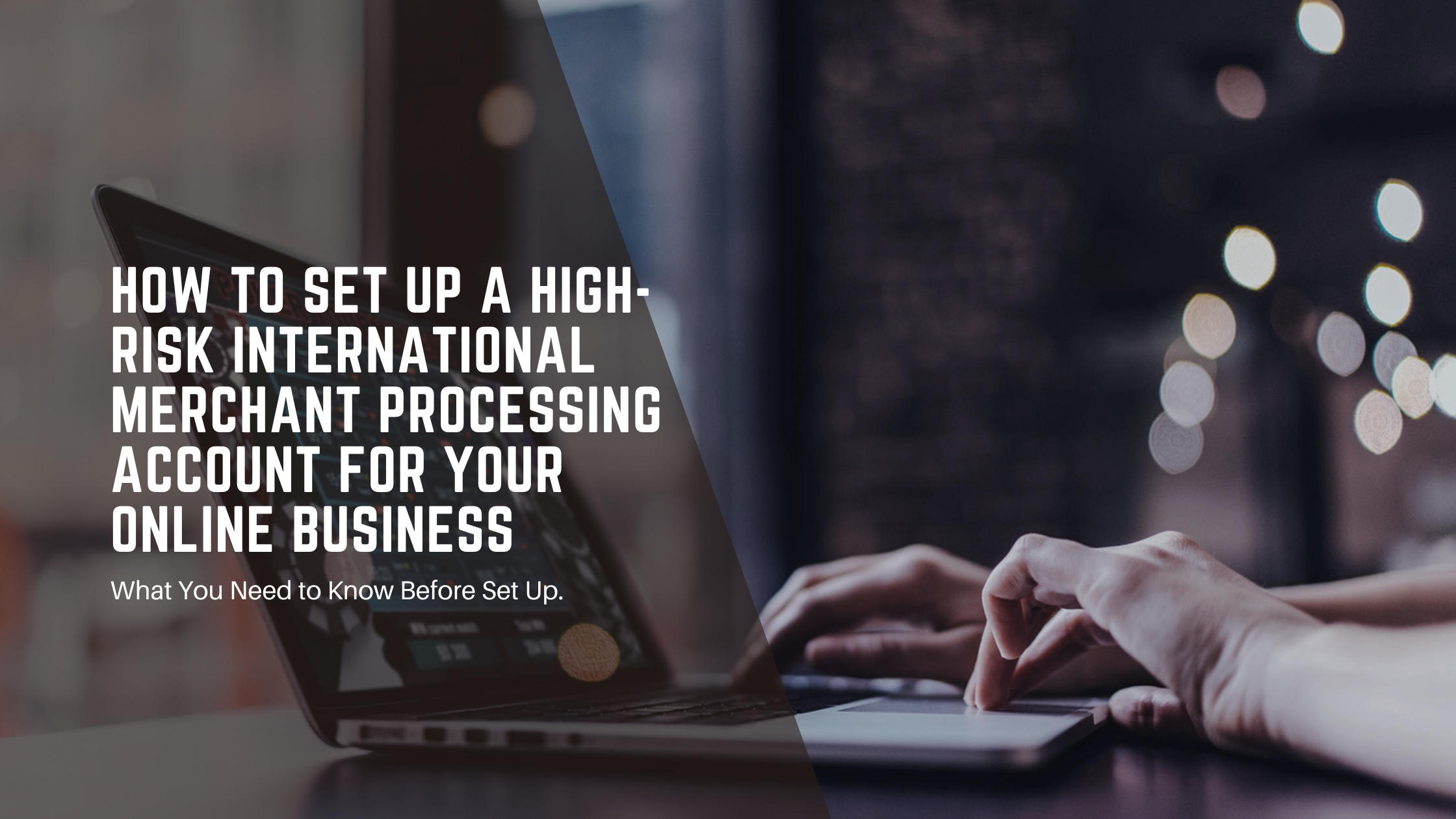December 4, 2025

-
Written by: Merchant Connect UK
- January 21, 2025
If your online business operates in a high-risk industry, finding the right payment processing solution is critical to your success. High-risk international merchant accounts cater to businesses that face unique challenges, such as higher chargeback rates, regulatory scrutiny, or operating across borders. Setting up one of these accounts may seem daunting, but with the right approach, you can streamline the process and unlock new growth opportunities for your business.
This guide will walk you through the essential steps to set up a high-risk international merchant processing account for your online business.
Step 1: Understand What Makes a Business High-Risk
Before diving into the setup process, it’s essential to understand why your business may be classified as high-risk. Common factors include:
- Industry Type: Sectors like iGaming, adult entertainment, crypto trading, and nutraceuticals are often considered high-risk.
- Chargeback Rates: Businesses with higher-than-average chargeback rates fall into the high-risk category.
- International Transactions: Operating in multiple currencies or countries increases risk due to regulatory complexities.
- Subscription Models: Recurring billing structures are more prone to payment disputes.
Knowing your business’s risk factors will help you identify the right payment processing partner.
Step 2: Choose the Right Payment Processor
Not all payment processors cater to high-risk businesses, so finding the right partner is key. When evaluating providers, consider the following:
- Specialization in High-Risk Industries: Look for processors experienced in handling businesses in your niche.
- Global Reach: Ensure the processor supports international transactions and multiple currencies.
- Chargeback Management Tools: Advanced fraud prevention and chargeback mitigation features are essential.
- Regulatory Compliance: The processor should have a strong understanding of global compliance requirements like PCI DSS and anti-money laundering (AML) regulations.
Step 3: Gather the Required Documentation
High-risk merchant accounts typically require more documentation than standard accounts. Be prepared to provide:
- Business Registration Documents: Proof of incorporation and legal operation.
- Financial Statements: Bank statements and profit/loss records for the past six months.
- Processing History: Details of previous merchant accounts, including chargeback rates.
- Business Model Overview: A clear explanation of your business, including your website and transaction flow.
- Compliance Certifications: Any certifications proving your adherence to industry regulations.
Organizing these documents in advance will speed up the application process.
Step 4: Optimise Your Website for Approval
Payment processors will carefully review your website to assess risk. To improve your chances of approval:
- Include clear Terms and Conditions and Privacy Policy pages.
- Display comprehensive product descriptions and pricing.
- Make customer support contact information easily accessible.
- Add a refund policy that outlines terms clearly.
- Ensure your website is PCI compliant to protect customer data.
Step 5: Evaluate the Contract Terms
Once approved, review the contract carefully before signing. Pay close attention to:
- Processing Fees: High-risk accounts often have higher transaction fees. Compare rates across providers.
- Rolling Reserve Requirements: Some processors may hold a percentage of your transactions as a reserve to cover potential chargebacks.
- Settlement Periods: Check how long it takes to receive funds after a transaction.
- Early Termination Fees: Understand the penalties for breaking the contract early.
Step 6: Implement Fraud Prevention Measures
High-risk businesses are prime targets for fraud. To protect your account and reduce chargebacks:
- Use address verification systems (AVS) to verify customer billing information.
- Implement 3D Secure authentication for added transaction security.
- Monitor transactions for suspicious activity using fraud detection software.
- Set up robust chargeback management protocols.
Step 7: Test and Monitor Your Account
After setting up your high-risk international merchant account, monitor its performance regularly. Track:
- Transaction Success Rates: Ensure payments are processed efficiently.
- Chargeback Ratios: Keep your chargeback rate below the threshold set by your processor.
- Fraud Incidents: Adjust fraud prevention tools as needed.
Regular monitoring ensures your account operates smoothly and remains compliant.
Benefits of a High-Risk International Merchant Account
By setting up a high-risk international merchant account, your online business can:
- Expand Globally: Accept payments from customers worldwide.
- Increase Revenue: Offer diverse payment options, including credit cards, digital wallets, and cryptocurrency.
- Enhance Security: Leverage advanced fraud prevention and chargeback tools.
- Ensure Compliance: Meet international regulatory standards.
Conclusion
Setting up a high-risk international merchant processing account may require more effort, but the rewards are worth it. With the right partner, proper documentation, and robust fraud prevention, you can navigate the challenges of high-risk payment processing and position your online business for global success.
Categories
- Banking(14)
- Industry Insights(37)
- Merchant Account(8)
- Online Payments(20)
Recent Post
November 24, 2025
Best Payment Gateway for High-Risk Startups: 2025 UK Guide
November 11, 2025
How AI Is Reducing Fraud in High-Risk Payment Processing
October 26, 2025
